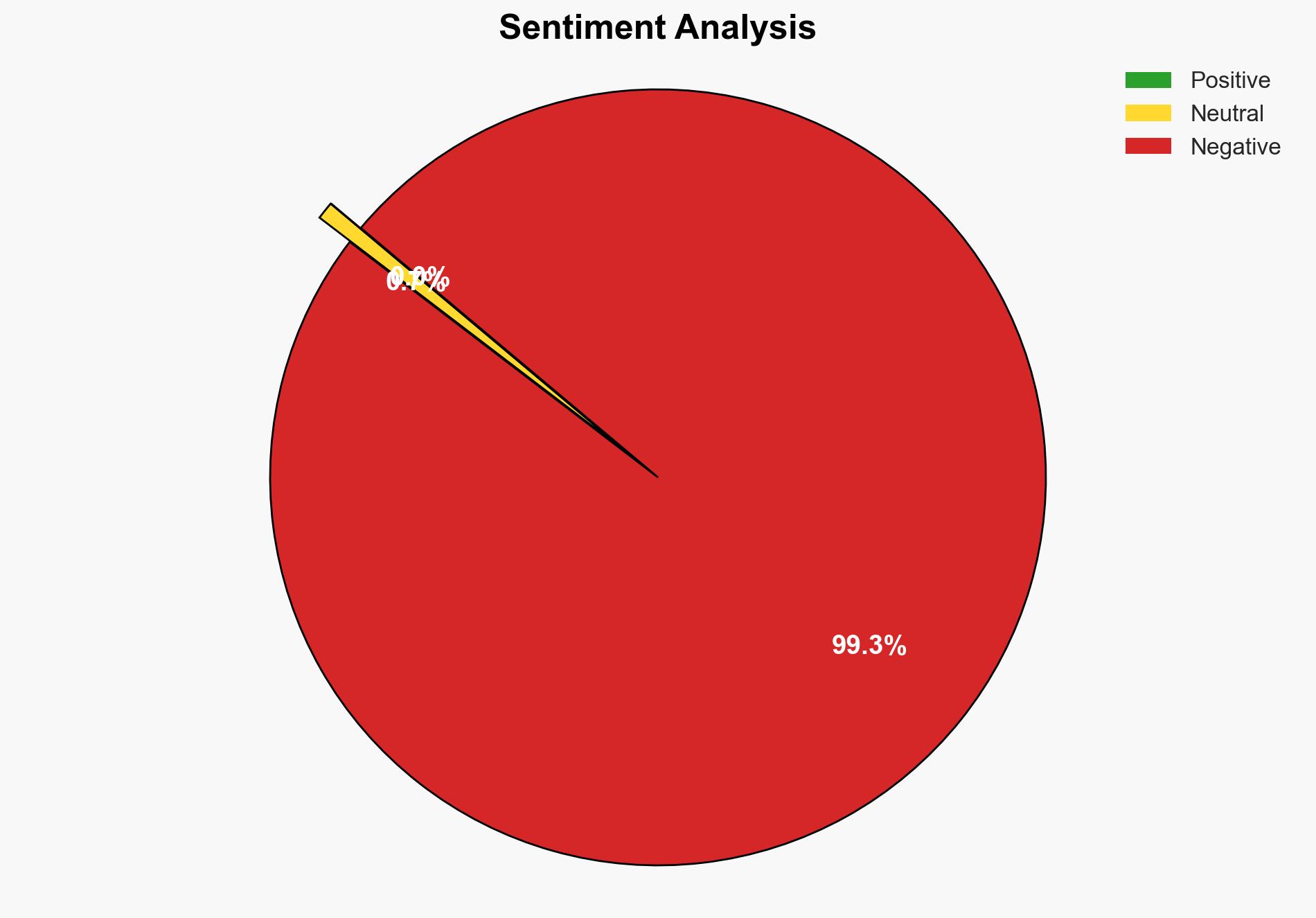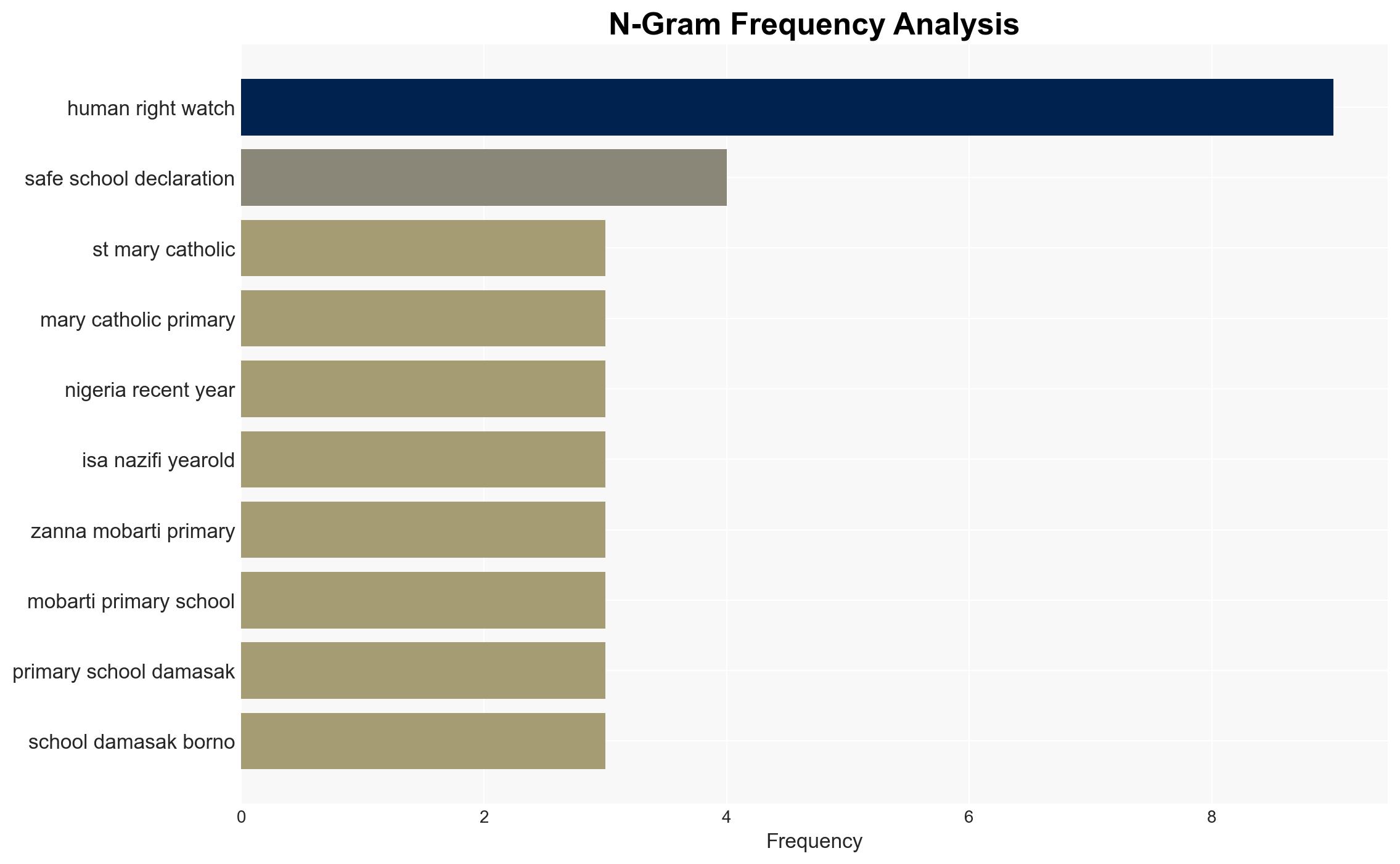Nigeria Renewed Spate of School Kidnappings
Published on: 2025-11-25
AI-powered OSINT brief from verified open sources. Automated NLP signal extraction with human verification. See our Methodology and Why WorldWideWatchers.
Intelligence Report: Nigeria Renewed Spate of School Kidnappings
1. BLUF (Bottom Line Up Front)
The most supported hypothesis is that the recent wave of school kidnappings in Nigeria is primarily driven by criminal gangs seeking ransom, with potential opportunistic support from jihadist groups. The Nigerian government’s response has been inadequate in preventing these incidents, leading to a deteriorating security environment. Confidence level: Moderate. Recommended actions include enhancing intelligence-sharing mechanisms, implementing community-based security measures, and increasing military presence in vulnerable areas.
2. Competing Hypotheses
Hypothesis 1: The kidnappings are primarily conducted by criminal gangs for ransom, with limited jihadist involvement. This is supported by the modus operandi of using motorcycles and the focus on financial gain.
Hypothesis 2: The kidnappings are part of a broader jihadist strategy to destabilize the region and undermine government authority, with criminal gangs acting as proxies. This is suggested by the involvement of groups like JNIM and the historical context of Boko Haram’s activities.
The first hypothesis is more likely due to the consistent pattern of ransom demands and the lack of direct ideological claims in most incidents.
3. Key Assumptions and Red Flags
Assumptions: It is assumed that the primary motivation for kidnappings is financial gain. The effectiveness of government security measures is presumed to be low.
Red Flags: The potential for increased jihadist involvement if security measures remain ineffective. The possibility of government underreporting or mischaracterizing incidents to avoid political fallout.
4. Implications and Strategic Risks
The continuation of school kidnappings poses significant risks, including the erosion of public trust in government, disruption of educational systems, and potential radicalization of affected communities. Escalation scenarios include increased foreign jihadist influence and potential international intervention if the situation worsens.
5. Recommendations and Outlook
- Enhance intelligence-sharing between local communities and security forces to improve early warning systems.
- Deploy additional military and police units to high-risk areas to deter potential kidnappers.
- Implement community-based security initiatives, including training and equipping local vigilante groups.
- Best-case scenario: Successful implementation of security measures leads to a significant reduction in kidnappings.
- Worst-case scenario: Increased jihadist involvement leads to a broader insurgency.
- Most-likely scenario: Continued sporadic kidnappings with gradual improvements in security response.
6. Key Individuals and Entities
Anietie Ewang – Nigeria researcher at Human Rights Watch
President Bola Tinubu – Nigerian President
Isa Nazifi – Parent of abducted student
7. Thematic Tags
Structured Analytic Techniques Applied
- Cognitive Bias Stress Test: Expose and correct potential biases in assessments through red-teaming and structured challenge.
- Bayesian Scenario Modeling: Use probabilistic forecasting for conflict trajectories or escalation likelihood.
- Network Influence Mapping: Map relationships between state and non-state actors for impact estimation.
Explore more:
National Security Threats Briefs ·
Daily Summary ·
Support us





